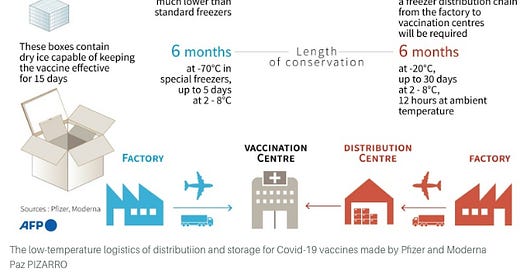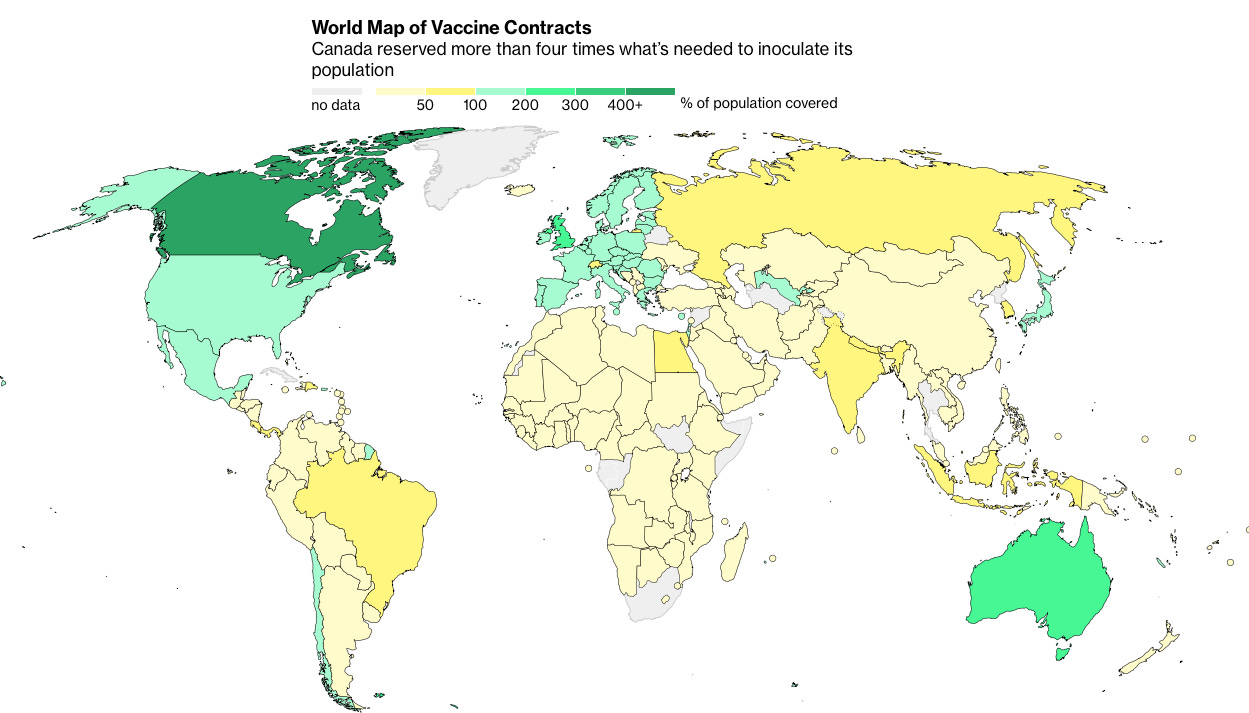Dear friends and colleagues.
The biggest vaccination in history has begun.
On Friday, the US cleared its first COVID-19 vaccine. Today, the FDA will review the second.
The scientists have done their jobs. But what is next? In start-up world, there is a saying that it is 10% idea and 90% execution. Vaccination is the same.
There are 5 key issues consider: 1) Funding, 2) Distribution, 3) Logistics Supply Chain, 4) Health equality, 5) Communications and Trust
1. Funding for Distribution
The Trump Administration, under Operation Warp Speed, has purchased in advance hundreds of million doses of several vaccine candidates. The Biden Administration will soon inherit the largest scale vaccination distribution effort in the US.
The government has spent ~$10B to develop the vaccine so far.
But to date, just $200M in federal emergency has been directed to state and local health departments for distribution.
The latest $908 billion coronavirus rescue bill put forward by bi-partisan group of lawmakers would allocate $6 billion for distribution efforts. We may get some more context on Monday on how that will shape out…
2. Distribution
In the US, FedEx and UPS began shipping 2.9 million doses of Pfizer vaccines to hospitals, clinics, and other distribution points.
Number of doses by state is allocated based on population. A few highlights:
- NY: ~170,000 doses
- MA: ~60,000 doses
- CA: ~330,000 doses
- Texas: ~230,000 doses
These numbers are likely to increase when the Moderna vaccine is approved and shipped.
3. Logistics Supply Chain
The main difference between Pfizer’s vaccine and Moderna’s is that Pfizer’s vaccine needs to be super cold (-70 Celsius), in a sealed box with dry ice.
A vaccine is a biological product. If it gets too hot or too hold, the active ingredient can degrade and become less effective.
Once a dose of vaccine is manufactured, it needs to be stored or transferred to health centers and clinics, where the vaccine will be administered.
4. Health equality internationally
Question: are human lives equal?
The 3 main vaccine makers (Pfizer, Moderna, AstraZeneca) estimate a total production of 5.3 billion doses for 2021.
Per 2 doses a person, that will cover ~2.5 billion people. World population is currently ~7.8 billion (sidenote: Luis Fonsi – Despacito ft Daddy Yankee was viewed 7.1 billion times on YouTube)
The 5 richest countries and the European Union have pre-ordered about half of it. Yet they only accounting for about ~13% of the global population.
Richest countries have hedged their bets with extensive supply deals. They also have ultra-cold storage and supply chain to deliver the vaccine to far off places (rural areas, villages).
This leaves dwindling vaccines for low- and middle-income countries. Most of these countries likely rely on COVAX, a joint fund for equitable vaccine distribution led by Gavi, a funder of vaccines for low-income countries. It has secured an estimated 700 million vaccines so far. A meager amount.
Ultimately, countries with excess doses might donate the vaccines to COVAX. But, high countries will likely meet their own vaccine needs before they pass on excess doses (if anti-vaxxers don’t skew the public).
Communications and Trust
I will end with this point on communications and trust – the most important aspects of human relationships. We have seen a lot of racial and ethnic disparities throughout the pandemic, as shown in the disportioncate hospitalizations for BIPOC.
People of color may face greater challenge in seeking and receiving COVID-19 vaccines. They may face access issues and may be more reluctant to get a vaccine due to mistrust of medical system.
Ultimately, people trust others like themselves. It is more important than ever to spread facts, so people can feel empowered to make informed decisions. Only by overcoming this trust deficit can we truly begin to heal for 2021.
Stay trusting,
Katherine
Sources:
https://www.nature.com/articles/d41586-020-03370-6
https://www.bloomberg.com/graphics/covid-vaccine-tracker-global-distribution/








Great explaination. I've included it in my collection of links that I share mid-week to supplement my main weekly article.